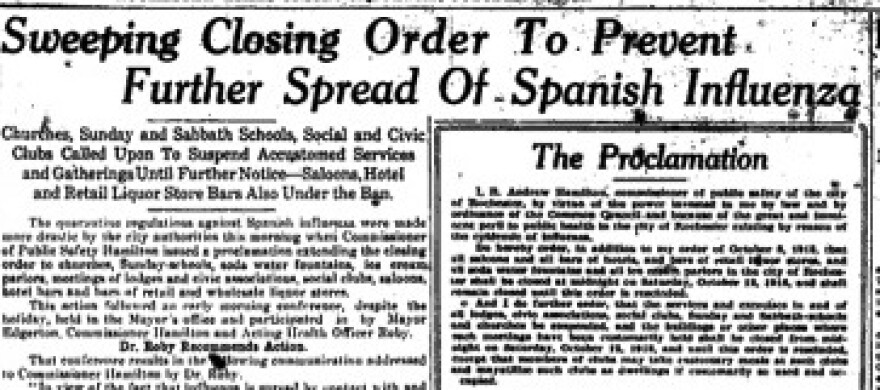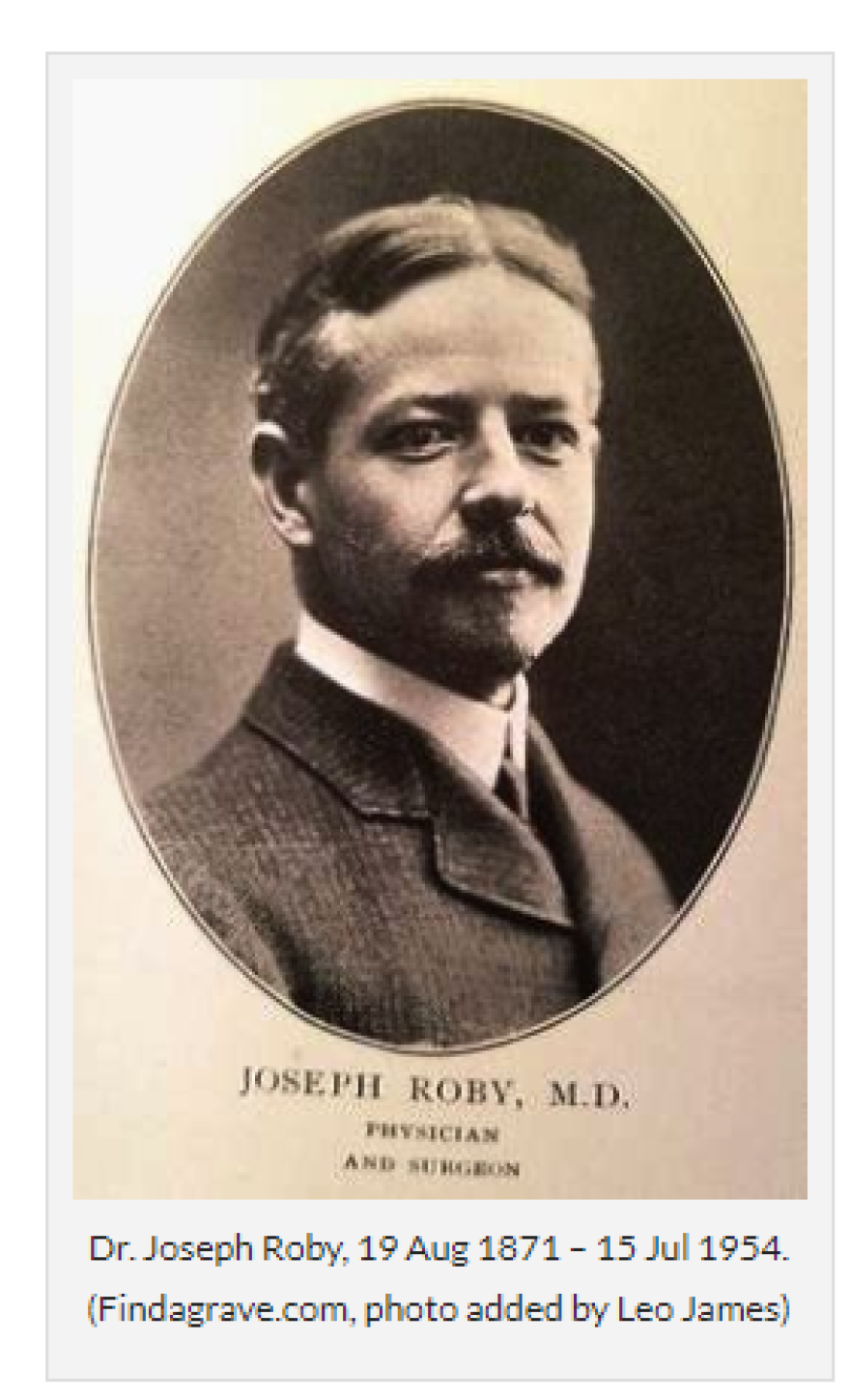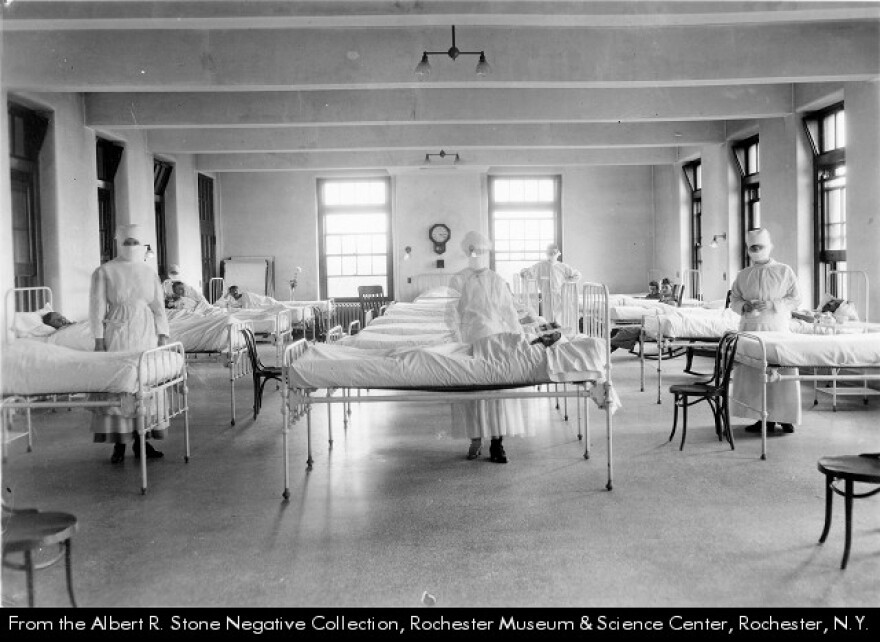We’ve been here before.
That’s according to Dan Cody, who works in the Local History and Genealogy Department at the Central Library of Rochester and Monroe County and wrote his Master’s thesis on Rochester and the 1918 influenza epidemic.
Cody says there are striking parallels to the COVID-19 pandemic. The 1918 influenza “spread like a spider web across America,” he said, arriving in Rochester in late September by train. Officials weren’t sure what the illness was, but they knew it was extremely infectious.
On Friday, September 20, the Democrat and Chronicle ran a page one story about "400 New Cases of the Grippe" in New York City. By October 5, newspapers were listing 100 cases of confirmed influenza in Rochester, and then just two days later there were 300 cases. Day after day, Rochester residents devoured the news coming in from four competing papers. Just as there is in 2020, in 1918 there was a lot of fear and uncertainty.
The strain of influenza was so virulent that, according to newspaper accounts, some children went off to school in the morning and came home in the afternoon to find their parents dead.
On October 8, Rochester schools welcomed students for a last lecture. Kids were given instructions on how to take care of their sick family members and how to take care of themselves. Once they were dismissed the schools shut their doors.
“Black wreaths or black buntings were draped over the front doors of house after house in every neighborhood of Rochester,” Cody wrote. “Schools and playgrounds were closed. Children were kept indoors, separated from potential disease carriers.”
Children sang a new nursery rhyme: “I had a little bird and its name was Enza I opened the window and in-flu-enza.”
Living in isolation in 1918 cut people off without radios or telephones. Churches, restaurants, dance halls and social clubs were shut down quickly.

There were a number of heroes in this situation, Cody found. Acting health officer Dr. Joseph Roby took the national data seriously and reached out to Rochester’s commissioner for public safety, convincing him to urge people to wear masks and stay away from each other. Roby talked Rochester’s presiding Catholic bishop, Thomas Hickey, into closing churches until the crisis was over. Roby also helped launch a massive poster campaign, blanketing the city in public health warnings.
According to Cody, Rochester was a destination city in 1918. We had a large immigrant population that came there to work, but they were still trying to grasp English so Dr. Roby had the posters translated Polish, Italian, and Hebrew.

While Dr. Roby and health officials were saving lives with a sweeping public information campaign, women were heroically serving in other ways, Cody said. Most healthy men were either fighting in World War I or producing munitions in local factories for the national war effort, so the women of Rochester came out of their homes and volunteered by the hundreds to help the Rochester Red Cross deliver food, transport nurses, and go into homes to help and deliver food.
“People didn't have refrigerators. At best you had an ice box,” according to Cody.
No refrigerator. No unemployment assistance or government aid. There was no federal response to the virus in 1918. The wave of infections that fall shut Rochester down for six weeks.
Cody’s research showed that 742 people died of influenza in that time. Nationally, almost 700,000 Americans died from the influenza epidemic of 1918. Worldwide, about 50 million people died. Rochester escaped the worst, Cody said.
In September 1918, Philadelphia officials decided to throw a party. When the Fourth Liberty Loan Drive parade stepped off on September 28, some 200,000 people jammed the streets as biplanes flew overhead, and John Philip Sousa himself conducted joyful marches. A few weeks later, nearly three thousand people were dead. Cody noted that Dr. Roby heard what happened in Philadelphia and decided he was going to limit the size of crowds in Rochester.
“That was really what helped Rochester go down and so Rochester was affected minimally compared to other cities of the same size,” Cody said.

When the infection dissipated, there was no announcement that it was over, no parade, no public party. Schools simply reopened, churches unlocked their doors, and things went back to normal. Cody would like to think that our relative success in the past has taught us to be cautious now.
“The most important lesson that can be learned from Rochester’s experience in 1918 is that people are the most valuable tool in fighting such a pandemic,” Cody wrote. “It is a population that is prepared, educated, and participates that will be successful in the face of such health crises.”
Dan Cody teaches American history at Finger Lakes Community College, and you’ll find a link to his master’s thesis on Rochester and the 1918 influenza epidemic at digitalcommons@brockport.edu.




